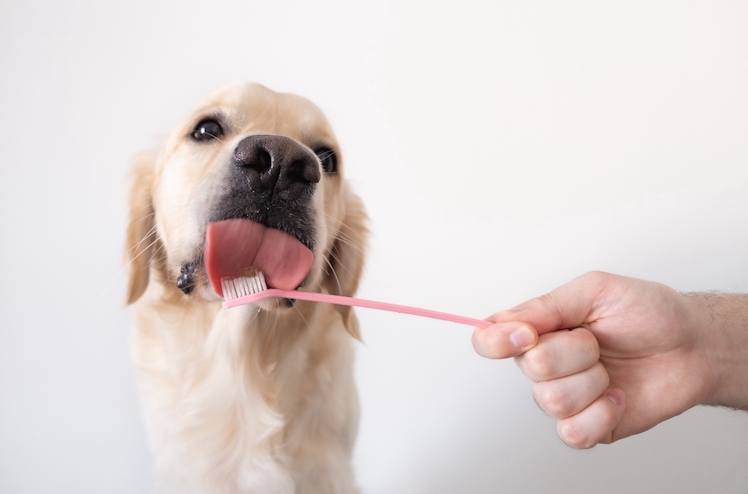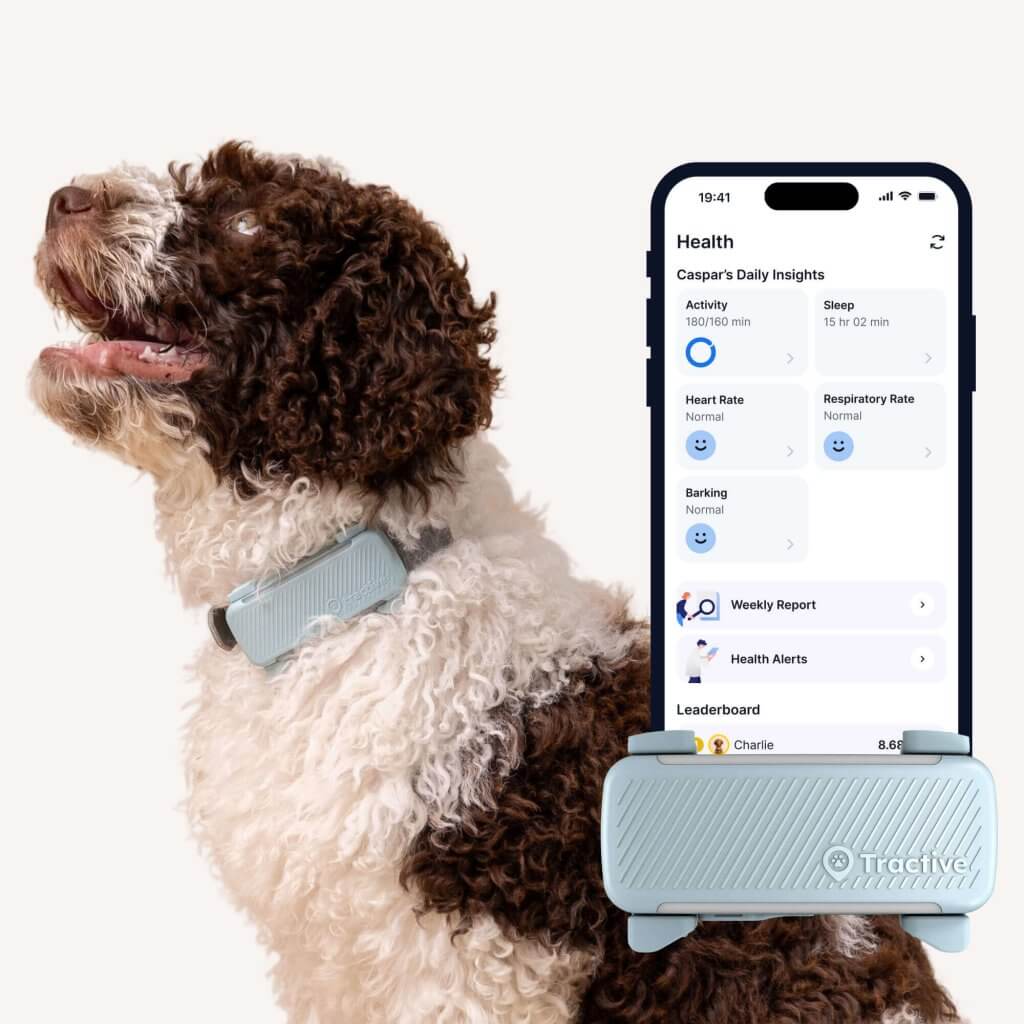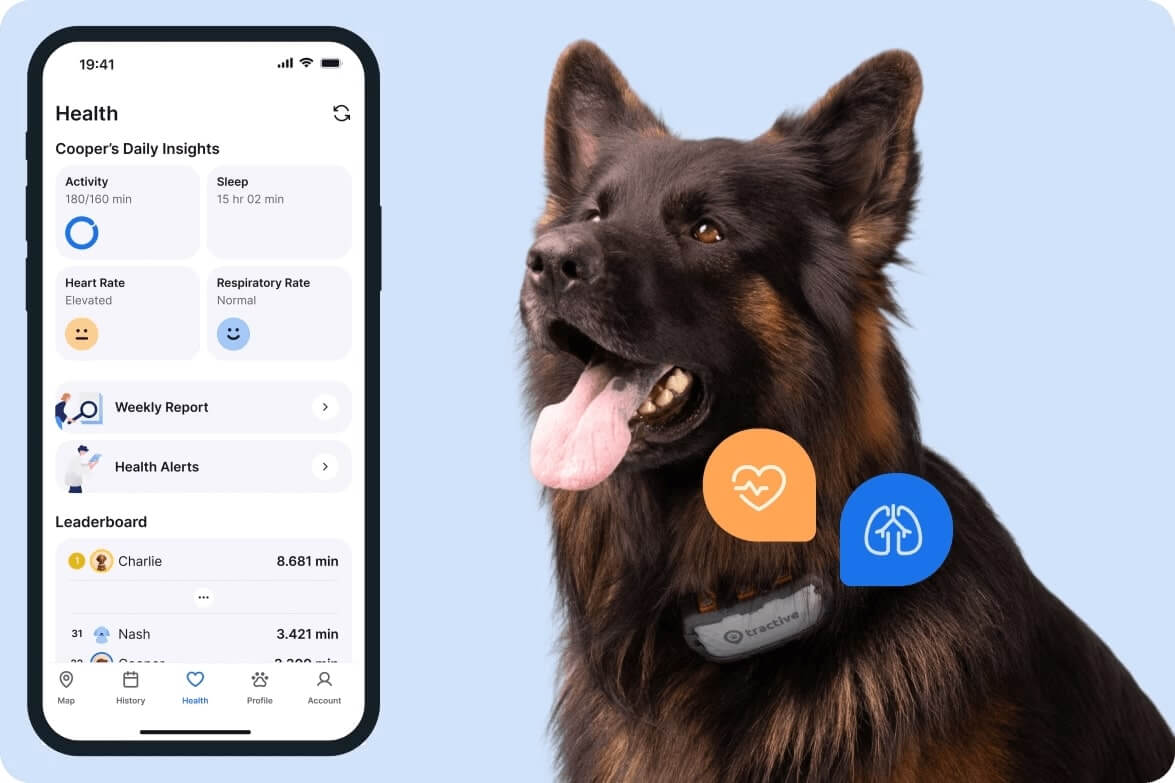Dog Dental Care: How To Get Your Dog The Best Smile Ever
You may be exercising your dog or giving them the best meals...but what about their smile? That's why staying on top of your dog's dental care is always a smart idea.

Just like humans, dogs also need a little extra attention for healthy teeth and gums. In this post, we’re going to share some simple steps to get started with dental care for your dog. (Plus, some more ways to stay on top of their health and wellbeing.)
Key Takeaways
A consistent dog dental care routine, including brushing and dental chews, help prevent common issues like plaque buildup, gingivitis, and periodontal disease, which can lead to pain and tooth loss.
Some steps in the process include getting your dog used to brushing, using dog-friendly dental products (like dental chews), being consistent, and even switching up your dog’s diet.
Don’t skip dental checkups while at your vet’s. They’re the most reliable way of picking up on a potential dental issue early on.
The Tractive smart dog tracker with Health Monitoring helps you catch on to a change in your dog’s behaviors – like their activity, sleep quality, and even vital signs – which could signal something’s off, health-wise. So you can take action early and get them over for a checkup on time.

Always know your buddy is healthy & safe
Read more5 reasons why your dog’s dental care is worth the investment
Much like us humans, neglecting your dog’s dental care will cost you in the long run. Here are a couple of reasons why it’s worth the long-term investment. It can help you:
- Prevent dental diseases
Including periodontal disease, gingivitis, stomatitis, and tooth decay. Watch out for signs like bad breath, swollen gums, loose teeth, drooling, or even reluctance around meal times. - Avoid more serious health conditions
Left untreated, bacterial dental infection may spread to other parts of the body. These include the heart, liver, and kidneys – which may be fatal. - Save a ton of money in the long run
From preventing dental diseases than having to pay for expensive treatments like extractions or other medical interventions.
With a regular dental care routine with your dog, you can detect any tooth trouble early on – and prevent them from getting worse over time. With a healthy set of teeth, your dog can eat, play, and interact without the pain and discomfort of dental issues and enjoy a better quality of life.
💡A dog GPS tracker with Health Monitoring can help you stay on top of other aspects of your dog’s health – including their daily activity and sleep. If there’s a weird drop in their activity or a change in their sleep quality, it could indicate discomfort, pain, or even illness.

Get health alerts for your dog
Our pups can’t always tell us if something’s wrong. But if their tracker detects unusual changes in their routine, you’ll get an alert, helping you catch potential issues early.
6 easy dog dental care tips to get started
1) Get your dog used to “brushing”
Your dog might feel nervous or overwhelmed at you suddenly getting your hands in their mouth. Use your hands first to gently touch their teeth to get them used to the sensation. Lift up the upper flap of their lip and move your hands in gentle, circular motions over their teeth. (Like you would with a toothbrush.) Make sure to praise and encourage them as much as you can to help them feel more relaxed and safe. If at any point your dog shows signs of anxiety, back off and give them a little time before you resume.
Most importantly: start slow and build up gradually. Most dogs might take a few weeks (if not a month) just to get used to the process. Over time, you can move from using your hands to cleaning their teeth with a dental wipe. And with a bit of patience, you’ll have a dog who looks forward to regular brushing sessions in no time.
2) Use dog-friendly dental products
We’d only recommend using dental products once you feel like your dog might be comfortable with it. Make sure you invest in dog-friendly toothbrushes and toothpaste. (As products built for humans won’t work the same way.) In some cases, like with toothpaste, they can even be harmful to your dog if they accidentally swallow it.
- Dog-friendly toothbrushes
Ideally, you should use a soft-bristle brush with a longer handle that can reach your dog’s back teeth. - Dog-friendly toothpastes
Some toothpastes come in dog-friendly flavors (like peanut butter or poultry.) We also recommend using an enzymatic toothpaste, as these come with antibacterial properties. Just remember: your dog won’t naturally spit out their toothpaste the way us humans do while brushing. So avoid toothpastes that contain harmful chemicals like fluoride or xylitol.
If you’re stuck, check in with your local vet who can recommend some dog-friendly products that might be available where you are.
3) Brush your dog’s teeth regularly
Get your dog comfortable with their new toothbrush and toothpaste first. Let them sniff it and inspect it thoroughly before you begin. (And if you’ve picked one with a yummy flavor, they’ll warm up to it even faster!) Once they’re more accustomed to them, let’s get brushing:
- Start by lifting the flap of your dog’s lips and gently exposing their teeth. Use slow, gradual motions to reduce any anxiety your dog might feel.
- Use a small amount of toothpaste at first and brush just your dog’s front teeth.
- Hold the toothbrush at a 45-degree angle to your dog’s teeth. Brush in gentle, circular motions and focus on their gum line. (That’s where the plaque tends to accumulate.)
- As your dog slowly gets more comfortable with regular brushing, pay special attention to their back molars. (These are vulnerable to tartar buildup.)
- Gradually increase the duration and number of teeth you brush during each session.
How often should you brush your dog’s teeth? Experts recommend it around 2-3 times a week. But while brushing, if you notice any signs of redness, swelling, bleeding, loose teeth, or bad breath, make sure to check in with your local vet immediately.
4) Try dental chews
Dental chews are a smart alternative if your dog doesn’t take well to teeth brushing. With your dog chomping on a dental chew or toy all day long, the saliva they produce helps keep your dog’s breath fresh and their teeth clean. These products also massage the gums and get rid of food particles.
Dental chews that contain delmopinol are a great option, since it helps fight against common dental problems like bacterial infections and plaque buildup. Some dental chews include ingredients like mint which can help your dog’s breath smell better.
Just keep in mind that dental chews might not be as effective as a proper dental kit. You should try and include them alongside regular brushing in your dog’s dental care routine. But if you’re experiencing difficulties or your dog just isn’t cooperating, get in touch with your local vet to explore your options.
5) Switch to a dental-friendly diet
- Opt for dry kibble over wet food
Kibble has a crunchy texture which can help clean your dog’s teeth as they chew. Over time, this helps reduce plaque buildup. - Go for foods containing enzymes and antioxidants
These can help control tartar buildup and generally support oral health. - Avoid foods high in sugars, additives, and fillers
These can worsen dental problems and are usually nutritionally poor. - Add dental powder to your dog’s meals
When you sprinkle dental powder in your dog’s food, it can help the good bacteria multiply in your dog’s mouth while killing the plaque-building bacteria. Besides, it can also help freshen your dog’s breath and prevent tartar buildup. - Try a dental oral solution
You can add a dental oral solution to your dog’s water bowl. These additives are tasteless and can also help combat plaque buildup.
7) Keep track of your dogs’ health
Good dental health is an important part of your dog’s overall wellbeing – and sometimes changes in your dog’s behavior, like reduced activity or disturbed sleep, can be early signs of discomfort or pain caused by dental issues. That’s where technology – aka the Tractive smart tracker for dogs – can lend a hand.
Strapped to your dog’s collar, your tracker’s Health Monitoring features track your dog’s typical patterns over time and will send you a Health Alert if there’s a noticeable change, such as a drop in activity or restless nights. These alerts help you catch potential health concerns early – including dental pain that might make your dog less active or interfere with their rest.

By monitoring these subtle signs, you can take timely action, whether that means scheduling a dental checkup or adjusting care at home. This way, you’re supporting your dog’s oral health and overall happiness with smart, proactive monitoring.
Ready to get your dog the best smile ever?
If you take the time to develop good oral hygiene habits early on, it can make a huge difference in your dog’s dental health. Besides this, we’d also recommend making dental care a positive experience for them. Offer your dog cuddles, praise, and tons of ear scratchies after each brushing session to reinforce the idea that it’s a good habit. Aim for brushing sessions 2-3 times a week – and you’ll be on your way to getting your buddy their best smile, for life.
And if you’ve liked this post, share it with a friend or a loved one – and let’s help build a safer, kinder world for our furry friends together.



